The demand for new technologies to tackle air pollution is growing. Governing bodies worldwide are increasingly looking for technologies that can reduce overall greenhouse gas emissions and provide cleaner air. Battery electric vehicle (BEV) technology is one of many methods being explored to meet these goals and deliver a less polluted future. And Johnson Matthey (JM), a global leader in applying science to make the world cleaner and healthier, is creating the innovative solutions to meet this expanding demand.
The drive for cleaner air
The clear link between air quality and human health has created a demand for innovative solutions to limit atmospheric pollution. The air in urban areas is impacted significantly more because pollutants including sulfur dioxide, carbon monoxide, unburnt hydrocarbons and nitrogen oxides can build to toxic levels and cause severe health problems.

Long-term exposure to air pollution is currently the largest environmental threat to human health. It is estimated to cause around 40,000 deaths a year in the UK. The transport sector is a major source of greenhouse gas and air pollution. EU-wide, it is estimated to contribute to around 25% of total greenhouse gas emissions. That high proportion means a great deal of attention is placed on combatting emissions in this sector, and the focus is on developing new technologies to power vehicles.
Many governments see electric vehicles (EVs) as a key emerging technology in battling greenhouse gas emissions. An increasing number of countries are introducing policies to support the adoption of EVs, including demand-side subsidies and supply-side obligations.
With an estimated one third of road vehicles using its catalytic converters, JM is established in bringing clean air technologies to the public
Furthermore, many countries have low emission zones (known as clean air zones in the UK) and the sale of vehicles powered solely by internal combustion engines is being phased out by some. By promoting low emission vehicles and technologies, we can create large-scale emission and air quality benefits. JM has over 200 years’ experience in scientific and technological innovation. With an estimated one third of road vehicles using JM catalytic converters, JM is established in bringing clean air technologies to the public. Today, JM focuses its R&D efforts on creating a cleaner future and solving the challenges faced by the vehicle industry with the overall goal to increase EV use.
New gear: Alternative powertrains
In the face of changing government regulation and novel technologies, consumers and commercial fleet operators are beginning to consider replacing traditional vehicles with electric vehicles. There are many promising technologies within the sector, powered by different sources. These include; plug-in hybrid electric vehicles (PHEVs), fully battery-powered electric vehicles (BEVs) and fuel cell electric vehicles (FCEVs), powered by hydrogen. (see Alternative powertrains: What’s under the hood? box below)
Rather than a one-size-fits-all approach, different types are best suited to different applications. For long-range haulage or long distance travel, battery-powered vehicles are limited by energy density, size, weight and the cost of the battery pack. In these situations, hydrogen-powered FCEVs offer a viable alternative due to high energy storage and power capability. Fuel cells also refuel faster than their battery-powered counterparts. Compared to battery-powered vehicles, which can take an hour to recharge, modern fuel cells can be refuelled in minutes.
Where battery-powered vehicles are an advantage is in everyday journeys such as commutes and other short and medium distance journeys. Battery-powered vehicles offer many benefits including lower running costs and lower emissions. Thanks to these advantages, they are a promising technology for lowering the environmental impact of the transport sector, and are readily being adopted by governments to improve local transportation options.
Understanding the importance of battery electric vehicles for the future, JM saw the need to develop novel materials
However, there are still many barriers to widespread adoption of electric vehicles. Infrastructure is a key issue, with more public recharging stations needed in urban areas to support their use for commutes. That is key to those that cannot charge their vehicles at home due to a lack of access to off-street parking, for example. In addition, current materials cannot meet consumer demand in terms of properties like vehicle range, recharge rate and initial cost of investment. Understanding the importance of batteries for the future of consumer travel and clean air, JM saw the need to develop novel materials capable of overcoming the shortcomings of existing materials.
Combining decades of expertise in clean air solutions, JM developed the eLNO battery cathode material technology. This technology provides a step change in high energy performance compared to modern battery materials, in addition to offering improvements in terms of both performance and cost.
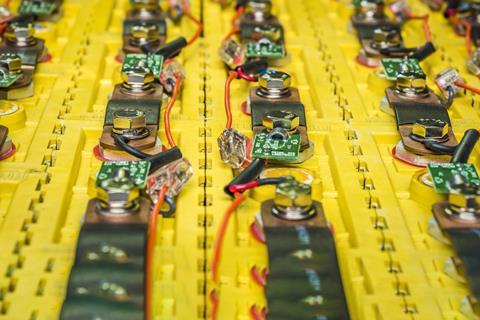
Alternative powertrains: What’s under the hood?
Vehicles powered using cleaner, greener means are increasing in popularity due to their reduced tail-pipe emissions, which can greatly improve local air quality. Furthermore, when paired with reductions in the carbon intensity of the electricity generation grid and carbon capture, utilisation and storage technologies, they can be made close to CO2-free over time.
Hybrid electric vehicle (HEV) – Powered by a traditional internal combustion engine supported by an electric motor. These vehicles are equipped with small batteries that are charged via regenerative braking - a technique that takes lost kinetic energy during braking and converts it into electric energy. HEVs balance when the internal combustion engine and electric motors are used based on efficiency. During periods of low speed - like in heavy traffic - the vehicle draws power from the electric motors. However, when cruising at high speeds - such as on the motorway - an internal combustion engine is more efficient, so it powers the car. Both the motor and the ICE can combine, for example during heavy acceleration when they work in tandem to increase power supply to the wheels.
Plug-in hybrid electric vehicle (PHEV) – Similar to HEVs, but the batteries are charged by externally plugging the vehicle battery into the power grid. Typically, these vehicles have larger batteries and increased energy storage capacity. They therefore have a greater zero-emission driving range.
Battery electric vehicle (BEV) – These vehicles are powered entirely by battery electric motors. The batteries are charged by plugging into the grid and brake regeneration.
Fuel cell electric vehicle (FCEV) – Powered using efficient fuel cell catalysts stored within the vehicle that create electrical energy via the reaction of hydrogen fuel and oxygen from the air. Fuel cell-powered vehicles are also equipped with batteries (or other energy storage devices) for both regenerative braking and to provide some of the transient power required for rapid acceleration.
Evolution of electric batteries
For decades, lithium-ion batteries formed the backbone of modern electronics. They have powered household and portable products including mobile phones and cardiac pacemakers. For each application, the battery material composition must be optimised to offer peak performance. All lithium-ion batteries can be separated into two components. The first – known as the anode – is a negative electrode typically made of graphite. The second – known as the cathode – is the positive electrode, which can be constructed with various materials.
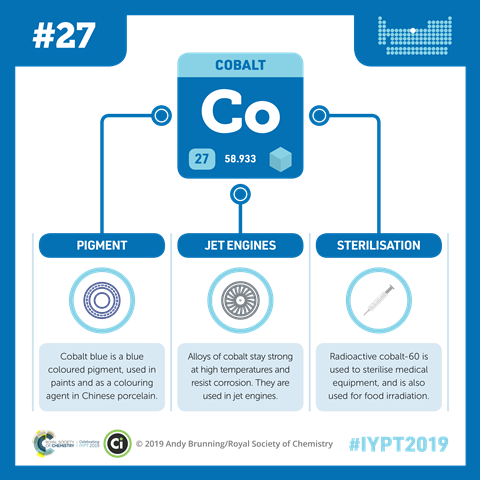
Much research has concentrated on optimising the cathode material, with many different compositions currently available. Lithium cobalt oxide (LCO) cathode materials are common in home devices and appliances, due to their greater energy and lifetime characteristics compared to predecessor nickel metal hydride technologies. However, LCO is not able to meet the performance demands necessary for use in electric cars – these applications require yet more energy and to be usable for a minimum 10-year vehicle lifetime. Additionally, the limited availability of cobalt make this battery technology expensive and a less viable option for EVs.
The most common battery types in transport applications are lithium-manganese-spinel, lithium-iron phosphate, lithium-nickel-cobalt-aluminium and lithium-nickel-manganese-cobalt (NMC) - listed in chronological order from the date first seen in published literature.
Historically, these formulations of materials were developed to tailor factors such as energy density, power, safety, temperature endurance, cycle life and cost to specific applications. For example, the battery-powered electromotors found in hybrid vehicles are constantly being recharged via regenerative braking - a technique that takes lost kinetic energy during braking and converts it into electric energy. Therefore, high power density, short charging time and long cycle lifetime are key requirements for the batteries in these vehicles as constant recharging makes energy density less important.
Stressed supply lines challenge the viability of batteries that rely heavily on cobalt
Conversely, pure battery electric vehicles require batteries with high energy density, as the vehicle is no longer assisted by a petrol or diesel engine. High cycle lifetimes are also needed to allow the vehicles to operate for mileages approaching those of traditional cars before recharging. Battery electric buses have similar needs, but can hold considerably larger batteries resulting in a reduced need for high energy density levels.
One of the key elements used in these historic formulations is cobalt, providing safety and thermal endurance in current lithium-ion battery technology. However, limited and stressed supply lines challenge the viability of batteries that rely heavily on this metal, necessitating the need for low-cobalt cathode materials.
Future of battery electric vehicles
To address the challenges of the industry and meet the demands of consumers, JM scientists are working hard to develop the next generation of battery cathode materials. Leveraging their expertise in materials development and manufacture, they have applied years of understanding to create a material composition that provides the advantages the market needs.
JM’s eLNO material offers a 20–25% improvement in terms of energy density
JM’s eLNO cathode material is a special mixture of elements that optimise properties essential for vehicles. One of the most important is energy density, which translates directly into a vehicle’s range. Compared to the current market leader (NMC 622 – nickel, manganese and cobalt in the ratio of 6:2:2), JM’s eLNO material offers a 20–25% improvement in terms of energy density. In addition, the eLNO material boasts a longer cycle lifetime, meaning the battery runs longer between charges.
Combined, this means vehicles powered by batteries using eLNO cathode materials can travel longer distances before needing to stop for recharging. Moreover, JM has worked to reduce the total amount of cobalt needed in its battery material, helping reduce costs and make battery vehicles more affordable.
Beyond lithium-ion, research into new cathode battery technologies focuses on novel lithium-based materials. These advanced technologies have the ability to offer great advantages in battery science. But many remain in their technological infancy and must overcome significant challenges before they can be commercialised.
It is expected that 6–7% of cars will be battery-powered by 2025. To support this roll out and encourage their adoption, increased battery materials R&D is crucial. Having worked for 40 years developing autocatalyst products that help make the world’s air cleaner, JM is committed to developing next-generation battery materials that enable longer driving ranges and reduce the total cost of ownership.
eLNO is a registered trademark of the Johnson Matthey group of companies





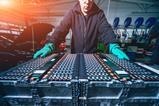

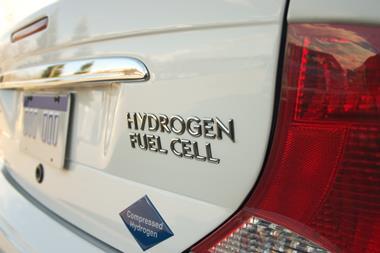
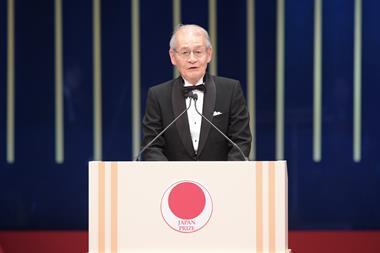








No comments yet